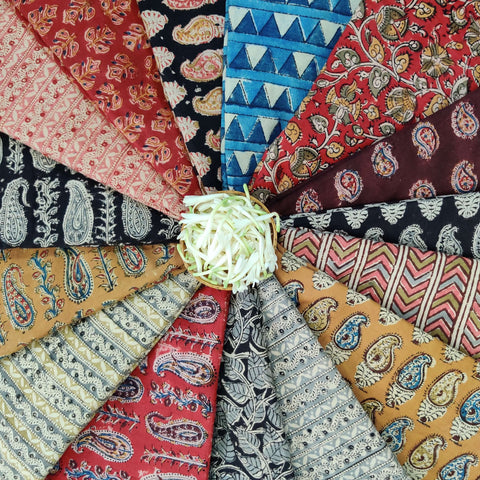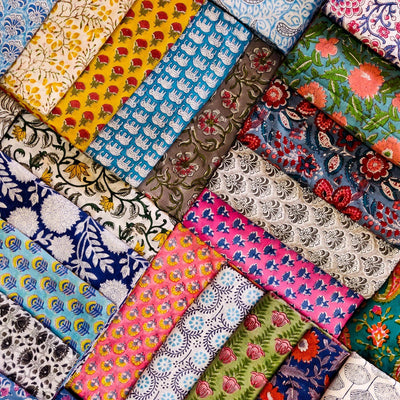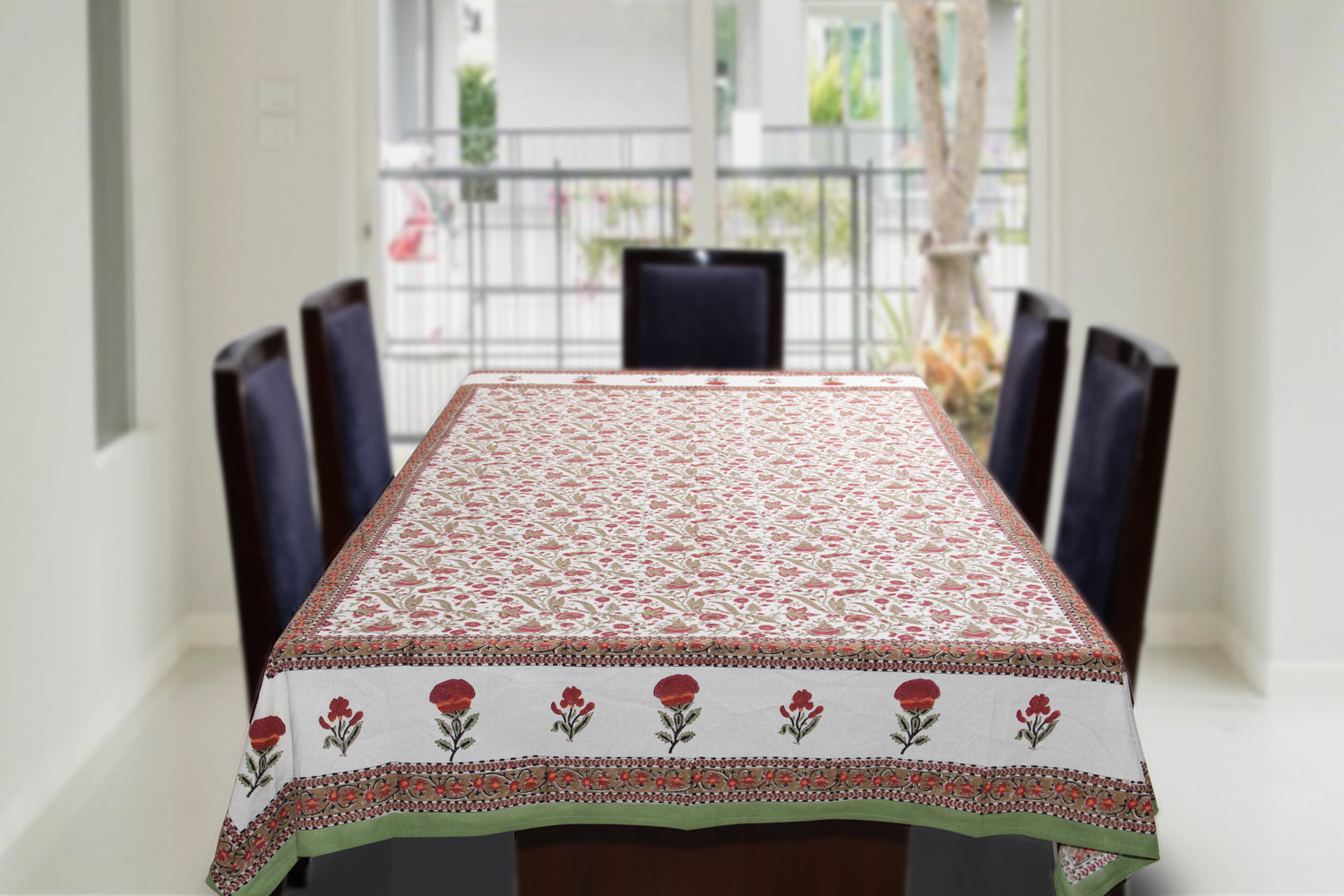
Hand block printed tablecloths are more than just table coverings – they're pieces of art that can transform your dining space and showcase centuries-old craftsmanship. The intricate patterns, created by skilled artisans pressing carved wooden blocks onto fabric, tell stories of cultural heritage while adding character to your home. Here's a comprehensive guide to help you select the perfect hand block printed tablecloth that complements your space and reflects your style.

Before falling in love with a particular design, start with the practical aspects. Measure your table carefully, considering both its everyday setup and extended length with leaves inserted. For a formal look, aim for a 10-12 inch drop on each side. For casual dining, a 6-8 inch drop works well. Remember to account for shrinkage if you're buying cotton – add an extra inch or two to your measurements.
For round tables, measure the diameter and add twice your desired drop length. For rectangular tables, measure both length and width, then add twice your desired drop to each measurement. If you frequently host gatherings, consider getting a slightly larger size to accommodate table extensions.

Hand block printed tablecloths come in a stunning array of colors, from vibrant jewel tones to subtle pastels. Consider your room's existing color palette when making your selection. Look at your wall color, furniture, and décor accents. A tablecloth should enhance these elements rather than compete with them.
If your dining space features neutral tones, you have the freedom to choose bold, colorful prints. Conversely, if your room already has strong color elements, consider a more subdued print that incorporates one or two of your existing accent colors. Remember that darker colors tend to hide stains better, making them practical for everyday use.

The pattern of your tablecloth can significantly impact the room's atmosphere. Traditional Indian motifs like paisley, floral, and geometric designs each create different effects:
Large-scale patterns work well in spacious dining rooms and on bigger tables, making bold statements that can serve as conversation starters. Small, intricate patterns are better suited to smaller spaces and tables, creating visual interest without overwhelming the room.
For modern interiors, consider geometric patterns or simplified traditional motifs. For bohemian or eclectic spaces, complex, multilayered patterns with rich cultural references can add depth and character.

The fabric choice affects both the appearance and functionality of your tablecloth. Pure cotton is the most common material for hand block printing, offering breathability and easy maintenance. Look for natural, untreated cotton that will accept dye well and become softer with each wash.
Higher thread counts indicate finer quality and better durability. However, very high thread counts can actually make the fabric less suitable for block printing, as the tight weave may not absorb dye as effectively. A medium-weight cotton (200-300 thread count) often provides the best balance.

Authentic hand block printing shows slight imperfections that testify to its handmade nature. Look for these characteristics:
The print should be clear but may show subtle variations in color density. Edges might not be perfectly crisp, and you might notice small gaps or overlaps where blocks meet. These "imperfections" are actually marks of authenticity and add to the charm of genuine hand block printing.
Check the reverse side of the fabric – the print should be visible, though slightly lighter than the front. This indicates proper dye penetration and suggests the colors will hold up well over time.

Consider how you'll use the tablecloth throughout the year. Lighter, brighter patterns work well for spring and summer entertaining, while deeper colors and more traditional designs might feel more appropriate for fall and winter gatherings.
If you're investing in a single tablecloth for year-round use, choose a pattern with colors that can transition well between seasons. Navy, deep red, or forest green bases with neutral accents work well across seasons.

Hand block printed tablecloths require specific care to maintain their beauty. Before purchasing, understand the care instructions:
Most require cold water washing and gentle detergents to preserve the prints. Some may need to be hand-washed initially to prevent color bleeding. Consider whether you're willing to commit to these care requirements before making your selection.

While hand block printed tablecloths are available at various price points, remember that quality pieces are investments. Higher prices often reflect better materials, more intricate designs, and more labor-intensive printing processes. Consider how frequently you'll use the tablecloth when determining your budget.
When making your final selection, consider how the tablecloth will be used. For daily use, choose something that brings you joy while being practical enough to withstand regular washing. For special occasions, you might opt for more elaborate designs that make stronger statements.
Take fabric samples home if possible, or request detailed photos showing the print scale and colors in different lights. This helps ensure the tablecloth will look as beautiful in your space as it did in the store or online listing.
By carefully considering these factors, you'll select a hand block printed tablecloth that not only enhances your dining space but also brings the rich tradition of this ancient craft into your home, creating a perfect blend of functionality and artistry.
The Boho Lover’s Guide to Styling with Hand Block Printed Cushions
April 11th, 2025From Floor to Fabulous: Elevate Your Space with Block Printed Rugs
March 31st, 2025